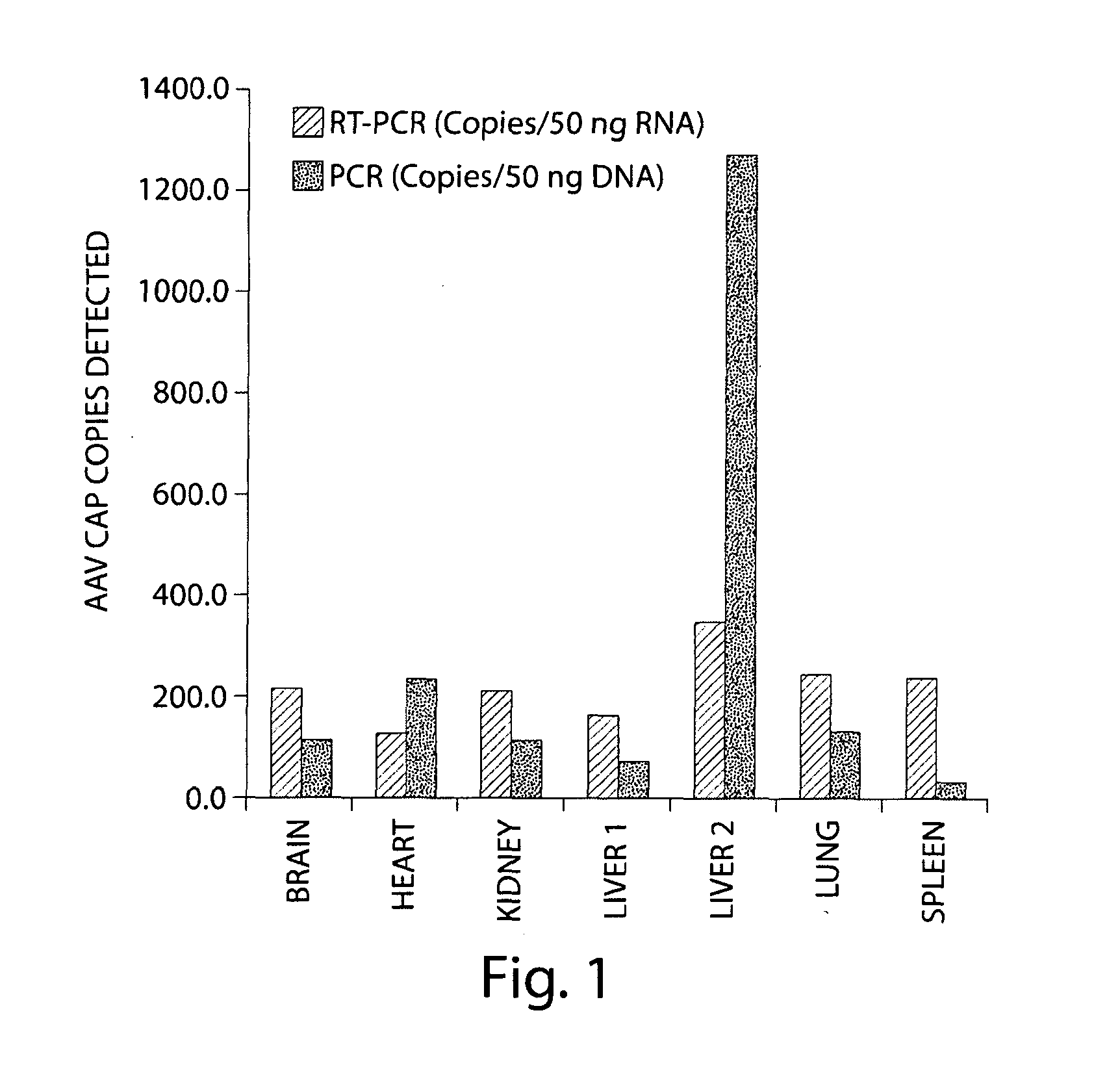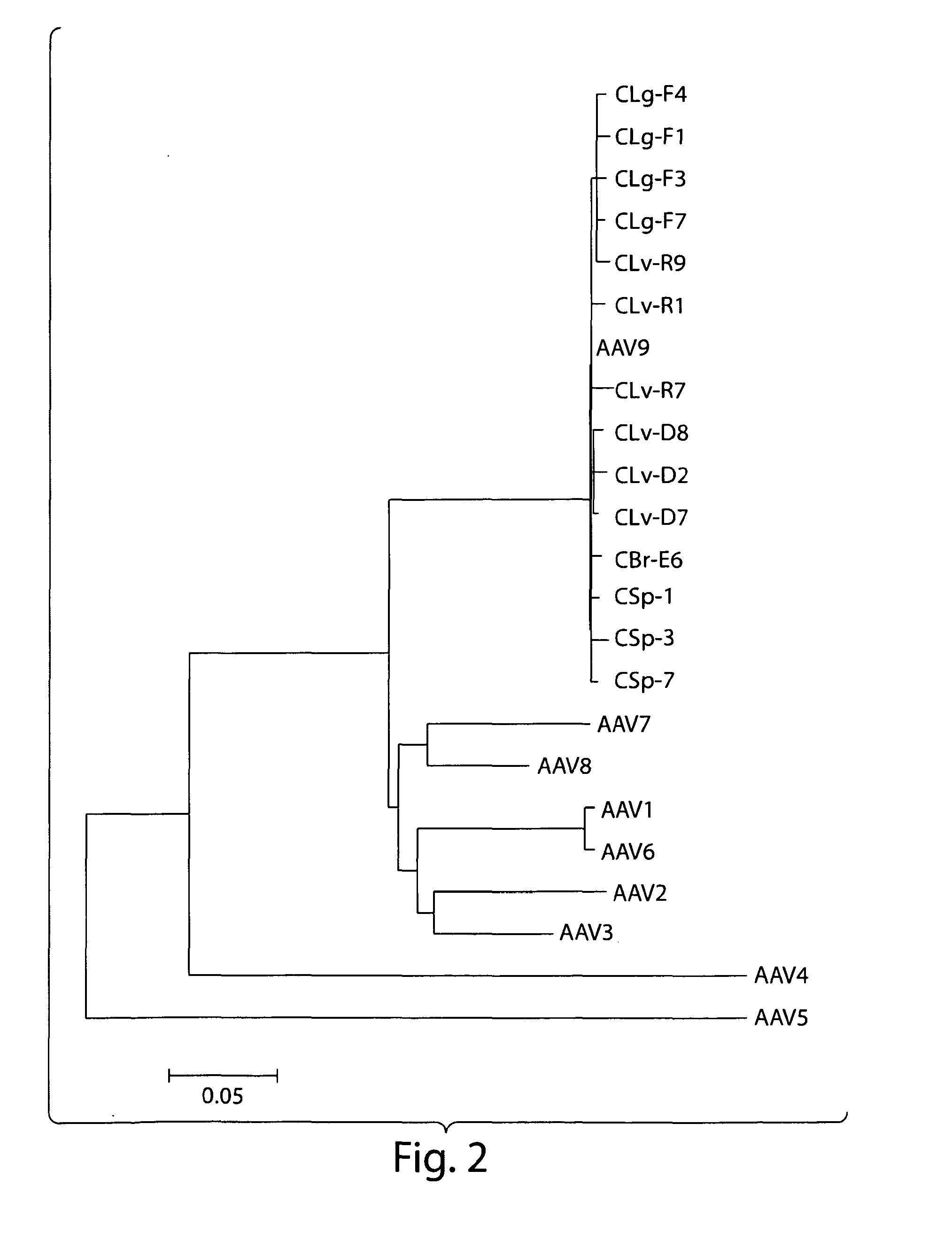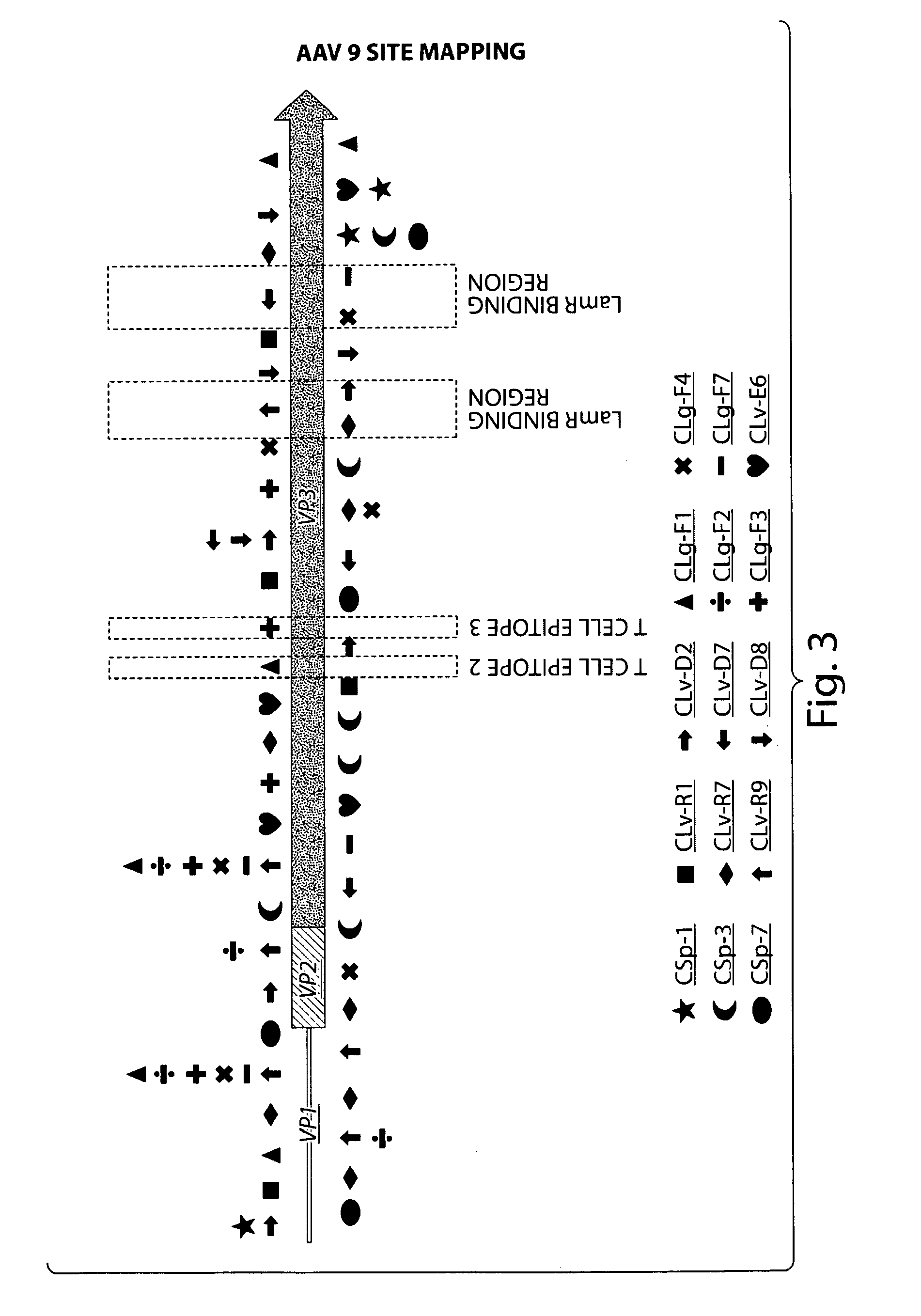Novel aav's and uses thereof
a technology of aav genome and aav fusion, applied in the field of novel aav, can solve the problems of poor gene transfer efficiency in major target tissues, inability to rescue aavs in many cases, and low abundance of persisted aav genomes
- Summary
- Abstract
- Description
- Claims
- Application Information
AI Technical Summary
Benefits of technology
Problems solved by technology
Method used
Image
Examples
example 1
Discovering New AAVs by Determining the Sequence of AAV Transcripts Expressed from the Proviral Genome in Cells
[0148]The presence of Endogenous AAV transcripts in non-AAV transfer vector treated Macaque tissues was examined by RT-PCR. PCR primers directed against Rep and Cap sequences were used for RT-PCR. DNase treated RNA samples were used to control for amplification of contaminating genomic DNA having rep and cap sequences. No Reverse Transcription and No DNAse controls were included. Surprisingly, endogenous AAV transcripts are detected in tissues of multiple non-AAV transfer vector treated Macaques. The results indicate that endogenous proviral genomes of AAV are transcriptionally active.
[0149]A strategy was developed for designing primers useful for RT-PCR detection of AAV RNA and identification novel AAV gene sequences such as the capsid gene. Primers were selected in a highly conserved region between multiple AAV genomes corresponding to the 5′ untranslated region of a gene...
example 2
Isolation of Transcriptionally Active Novel AAV Capsid Sequences from Chimpanzee Tissues for Vector Development
[0151]In an attempt to search for novel AAVs with propensities to infect primates, a variety of chimpanzee tissues were analyzed for the presence of AAV proviral genomes and cap RNAs first by qPCR and qRT-PCR using a set of primer and probe to target short stretches of the conserved cap sequence. The data indicated that all the tissues harbored AAV in variable abundances, with the highest copy numbers in liver. Also, cap gene was indeed transcriptionally active and cap RNAs were detected in all the samples, but levels of cap RNA were more consistent among different tissues with copy numbers, generally speaking, higher than DNA sequences. Subsequently, PCR and RT-PCR cloning were undertaken to rescue full length capsid sequences from both chimpanzee DNAs and RNAs. A total of 48 cDNA and 28 DNA clones of VP1 were analyzed by sequencing. The phylogenetic analysis segregated th...
example 3
Isolation and Characterization of Novel Cap cDNAs from the Primate Brain and Other Tissues that are Naturally Infected with AAV9 Variants
[0152]Naturally occurring AAV9 variants that are capable of escaping from host immune defenses and are transcriptionally active, serve as good substrates for retrieval of novel cap cDNA. Recent results revealed the presence of both rep and cap gene transcripts in rhesus and cynomolgus macaque tissues. Results disclosed herein corroborate these findings in chimpanzee tissues and provide a panel of novel AAV capsid cDNA clones that group with AAV9 clade phylogenetically. Brain and other tissues from chimpanzees were analyzed for cap RNA transcripts, and cap cDNA clones were isolated and analyzed by RT-PCR cloning for sequence characterization. The cap cDNA clones with 4 or more amino acid differences from AAV9 and within themselves were selected for further characterization, based on their phylogenetic grouping and vector productivity. (See Tables 3A...
PUM
| Property | Measurement | Unit |
|---|---|---|
| diameters | aaaaa | aaaaa |
| diameters | aaaaa | aaaaa |
| melting temperatures | aaaaa | aaaaa |
Abstract
Description
Claims
Application Information
 Login to View More
Login to View More - R&D
- Intellectual Property
- Life Sciences
- Materials
- Tech Scout
- Unparalleled Data Quality
- Higher Quality Content
- 60% Fewer Hallucinations
Browse by: Latest US Patents, China's latest patents, Technical Efficacy Thesaurus, Application Domain, Technology Topic, Popular Technical Reports.
© 2025 PatSnap. All rights reserved.Legal|Privacy policy|Modern Slavery Act Transparency Statement|Sitemap|About US| Contact US: help@patsnap.com



